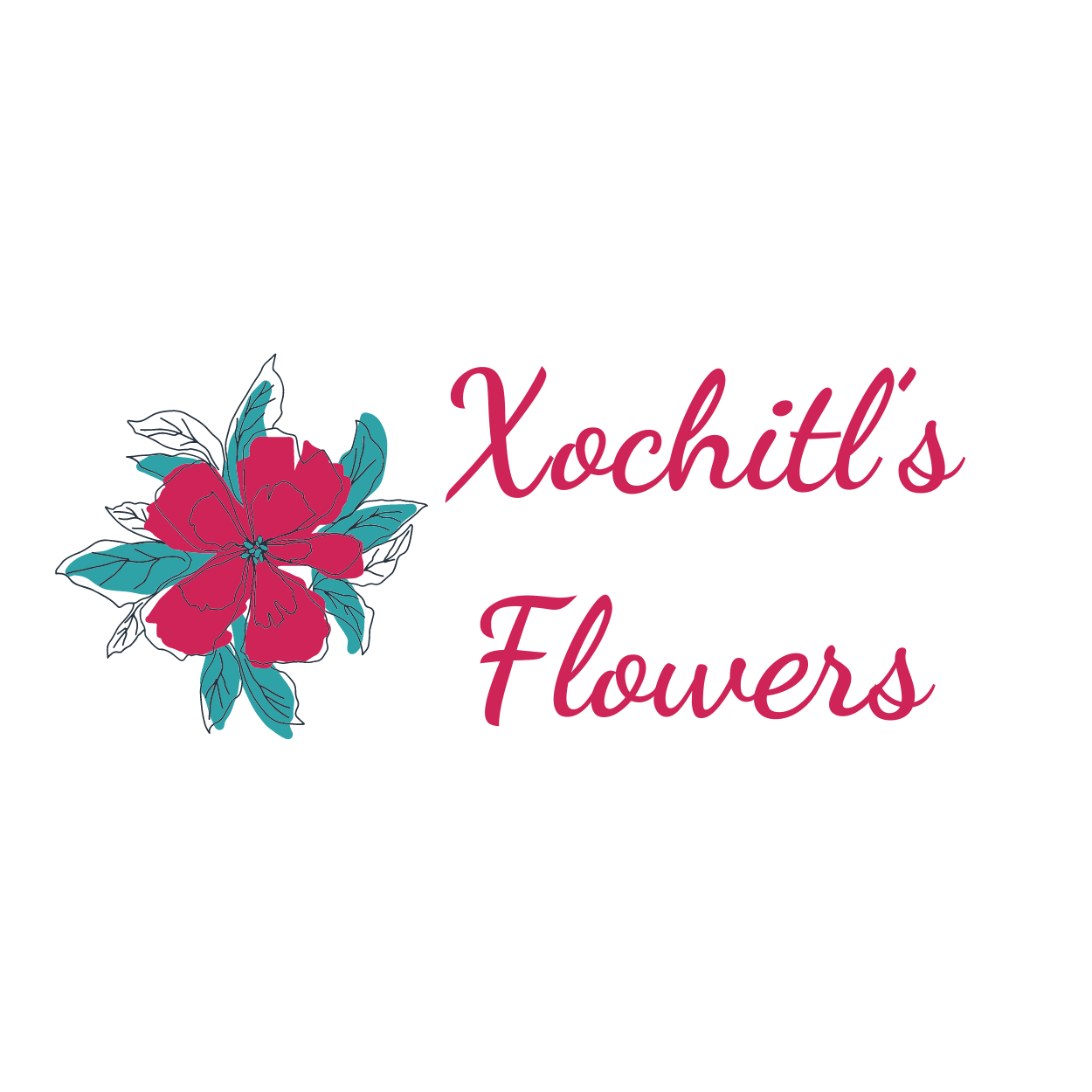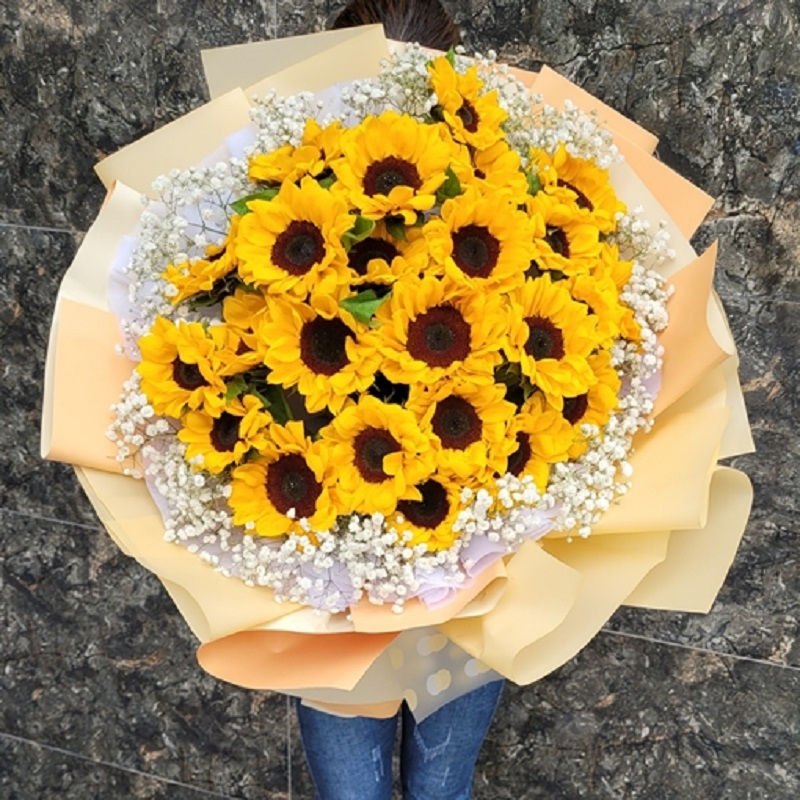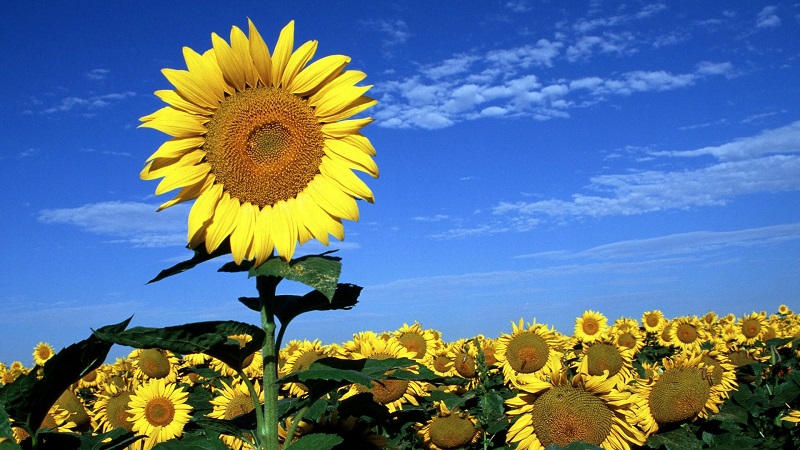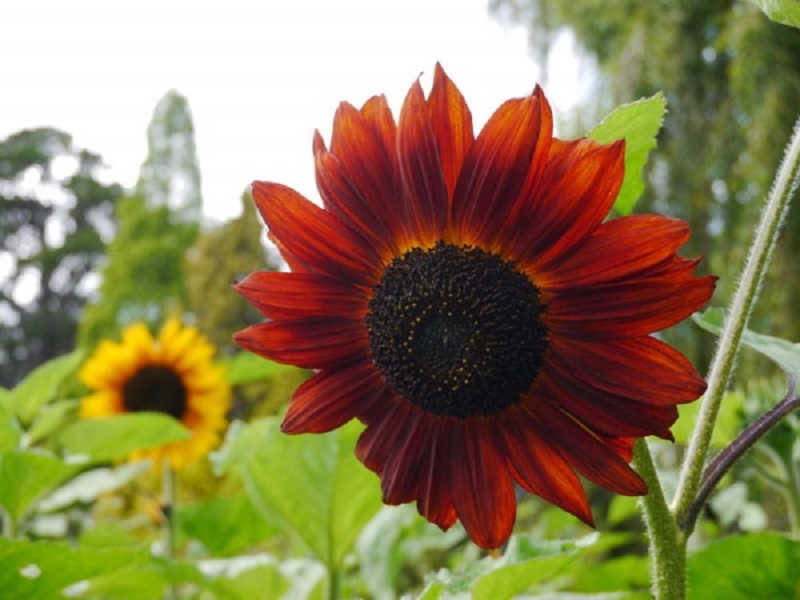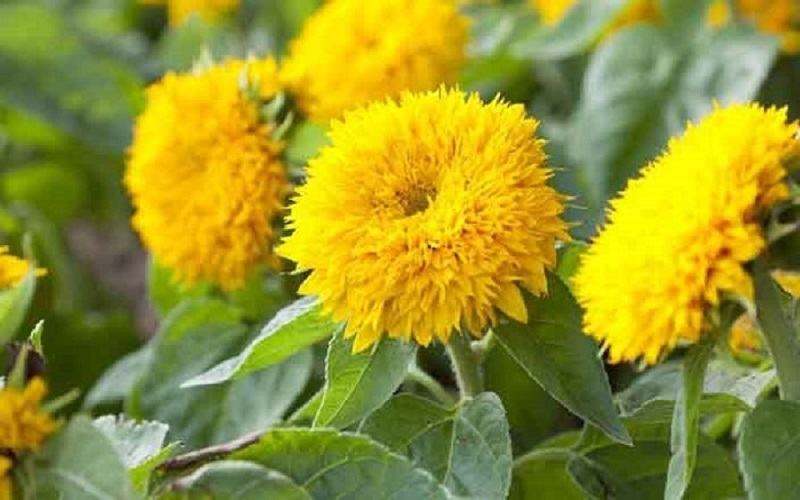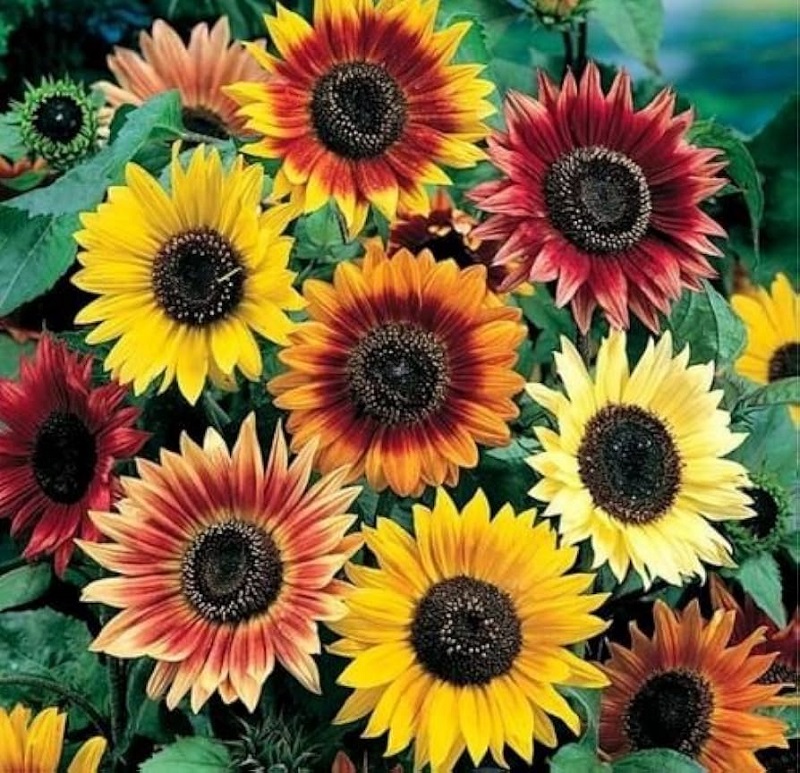Giant sunflowers are a spectacular addition to any garden, known for their impressive height and strikingly large blooms. These majestic plants captivate gardeners and onlookers alike with their towering presence and vibrant colors. The appeal of giant sunflowers lies not just in their sheer size, but also in their versatility and environmental benefits. This article […]
Sunflower
Sunflower is one of the most recognizable and beloved flowers in the world. Known for their towering height and bright, cheerful blooms, sunflower has a significant place in agriculture, gardening, and culture. Their historical importance and varied uses make them a fascinating subject for both gardeners and flower enthusiasts. Let’s explore the rich history, unique characteristics, and cultivation of sunflower.
History and Origin
Native Regions and Early Cultivation
Sunflower originated in North America, where they were cultivated by indigenous peoples for their seeds and oil. The sunflower was an important crop for Native American tribes, used for food, medicine, and dye.

Spread to Europe and Beyond
Spanish explorers brought sunflower to Europe in the 16th century. Initially grown as ornamental plants, sunflower soon gained popularity for their seeds and oil. Over time, breeders developed various sunflower varieties, enhancing their agricultural and ornamental value.
Botanical Characteristics
Physical Appearance
Sunflower is known for their large, round flower heads composed of ray florets (the yellow “petals”) and disc florets (the central part). The plants can range in height from a few feet to over ten feet tall. The leaves are broad, rough, and arranged alternately along the stem.
Growth Habits
Sunflower can be annual or perennial. The common sunflower (Helianthus annuus) is an annual, completing its lifecycle in one growing season. Sunflower typically follow a growth pattern of seedling, vegetative, reproductive, and flowering stages.
Types of Sunflowers
Common Sunflower Species and Varieties
- Helianthus annuus: The most well-known species, grown for seeds and oil.
- Dwarf Sunflowers: Shorter varieties ideal for small gardens and container planting.
- Tall Sunflowers: Varieties that can reach impressive heights, often used for dramatic garden displays.
- Ornamental Sunflowers: Bred for unique colors and flower forms, perfect for decorative purposes.
- Perennial Sunflowers: Species like Helianthus tuberosus (Jerusalem artichoke) that come back year after year.
Cultivation
Climate and Soil Requirements
Sunflower thrives in full sun and prefer well-drained soil rich in organic matter. They can tolerate a range of soil types but perform best in slightly acidic to neutral pH levels.
Planting Techniques
The best time to plant sunflower is in the spring, after the danger of frost has passed. Seeds should be sown directly into the soil at a depth of about 1 inch and spaced 6-12 inches apart, depending on the variety.
Care and Maintenance
Sunflower requires regular watering, especially during dry spells, but should not be waterlogged. A balanced fertilizer can promote healthy growth, but over-fertilization should be avoided to prevent excessive leaf growth at the expense of flowers. Pests and diseases can be managed with organic or chemical methods, and integrated pest management (IPM) practices are recommended.
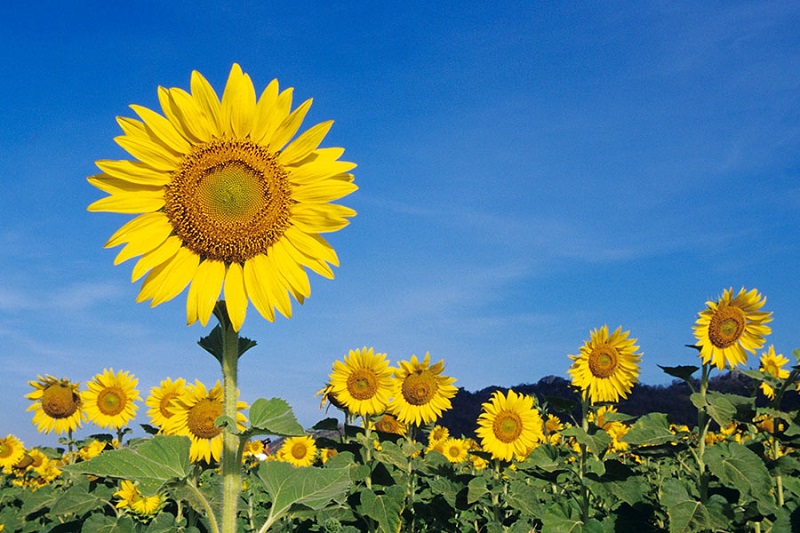
Uses and Benefits
Agricultural and Commercial Uses
Sunflower is grown commercially for their oil, which is used in cooking and as a biodiesel component. Sunflower seeds are also a popular snack and ingredient in bird feed. Additionally, sunflower meal, a byproduct of oil extraction, is used as animal feed.
Environmental Benefits
Sunflower attracts pollinators such as bees and butterflies, supporting biodiversity. Their deep root systems help improve soil structure and prevent erosion.
Ornamental and Aesthetic Uses
Sunflower is a popular choice for garden design and landscaping, providing height and color. They are also valued as cut flowers for arrangements and bouquets.
Pests and Diseases
Common Issues
Sunflower can be affected by pests like aphids, sunflower moths, and beetles. Fungal diseases such as downy mildew, rust, and powdery mildew can also pose problems.
Prevention and Treatment Strategies
Preventive measures include proper spacing, regular inspection, and maintaining good garden hygiene. Treatments can involve organic solutions like neem oil or insecticidal soap and chemical controls when necessary.
Cultural Significance
Symbolism and Meanings
Sunflower symbolizes happiness, loyalty, and adoration. They are often associated with positivity and warmth due to their sunny appearance.
Sunflower in Art and Literature
Sunflower has been a subject in famous artworks, most notably Vincent van Gogh’s series of sunflower paintings. They are also referenced in literature and poetry, symbolizing various themes.
Celebrations and Festivals
Sunflower festivals are held worldwide, celebrating the beauty and agricultural importance of this iconic flower. These events often include sunflower mazes, picking fields, and educational activities.
Conclusion
Sunflower is more than just a pretty face in the garden; they hold significant agricultural, environmental, and cultural value. Their vibrant blooms and towering presence bring joy and vitality to any landscape. Whether you are a seasoned gardener or just starting, growing sunflower can be a rewarding experience that connects you to a rich history and a world of benefits. Embrace the sunshine and vitality that sunflower brings and enjoy their lasting impact on your garden and life.
Short-day sunflowers offer a delightful twist on the classic sunflower, known for their ability to thrive in shorter daylight conditions. These sunflowers are not only visually appealing but also practical for various gardening and agricultural applications. Their unique growth patterns and adaptability make them a favorite among gardeners and farmers alike. This guide delves into […]
Red sunflowers offer a striking departure from the traditional yellow blooms we often associate with these iconic flowers. With their vibrant red petals and bold appearance, red sunflowers can transform any garden into a stunning showcase of color and beauty. This article explores the characteristics, cultivation, and benefits of red sunflowers, and highlights why they […]
Sunflower Teddy is a charming and unique variety of sunflower that stands out with its distinctive appearance and cheerful demeanor. Known for its adorable, teddy bear-like flower heads and vibrant color, this sunflower variety adds a touch of whimsy and brightness to any garden. This article delves into the characteristics, history, and cultivation of Sunflower […]
Multi-colored sunflowers bring a burst of vibrant hues and captivating patterns to any garden, offering a delightful alternative to the traditional yellow blooms. Known for their striking and varied color palettes, these sunflowers create a stunning visual display that can transform garden spaces and floral arrangements. This article explores the unique characteristics, history, cultivation, and […]
